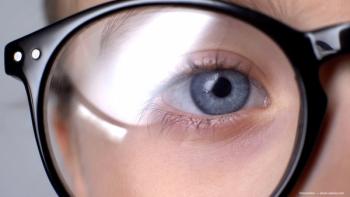
Scleral spacing procedures investigated for presbyopia
New York-The use of a scleral spacing procedure using PreView Scleral Implants (Refocus Group Inc.) appears to improve the technique to correct presbyopia. This revised technique seems to be a safe and effective method of improving near visual acuity without affecting distance visual acuity in emmetropic presbyopia, according to Barrie D. Soloway, MD, FACS.
He reported the results of the FDA phase II clinical trials.
"There are a number of ways to correct presbyopia that are primarily static corrections such as monovision, multifocality, lens exchange, corneal-based procedure, contact lenses, and laser and dynamic corrections that facilitate focusing the eye with a smooth transition of vision and include the crystalens (eyeonics)," Dr. Solo-way said. He is director, Vision Correction, and an assistant professor, department of ophthalmology, New York Eye and Ear Infirmary, New York. "Scleral-related procedures, the scleral spacing procedures, are being investigated in the United States."
The phase II trials began in February 2004, 6-month enrollment in the controlled randomized prospective study was reached in summer 2005, and the data were presented to the FDA, according to Dr. Soloway.
"We have improved the effectiveness of the scleral spacing band by flattening the bottom of it, which prevented rotation as happened with the earlier devices," he said. "Placing notches on the end of the device help it to hook into the exit and entrance wound of the lamellar scleral tunnel."
Automated sclerotome
The automated PresView Drive sclerotome has a circular blade near the bottom. This device is used to deform the sclera with the base plate to create a lamellar tunnel. "This shortens the surgical time," he said.
In addition to the initial procedure, another approach is being developed that will implant the spacers transconjunctivally.
"Our usual surgery is with a subconjunctival approach requiring a 360° peritomy. This should prove to be faster [and] more comfortable for the patient, and possibly [may] reverse some chronic open-angle glaucoma. This approach should be accepted more readily by glaucoma surgeons," Dr. Soloway said.
The phase II trial was a prospective randomized controlled study with a 2-to-1 ratio of surgeries to controls. The control patients were followed with the same examinations at 1, 3, and 6 months after enrollment as the surgery patients, and they underwent near vision testing as did the surgery group. The surgery patients are now being followed out to 2 years, according to Dr. Soloway, and the control patients continue to be followed past 6 months.
The 53 patients in the study are 50 to 60 years of age, have an uncorrected-near Sloan visual acuity of 20/63 or worse, and require at least a 1.25-D add to achieve 20/25 near vision. The distance-corrected visual acuity had to be 20/20, and the patients could not have had a previous ocular surgery, to be included.
"The data from the first 50% of patients (30 patients) who were followed for 1 year have been submitted to the FDA," Dr. Soloway reported. "When we evaluated the preoperative and postoperative 6-month data on the uncorrected-distance visual acuity, the most interesting phenomenon that we have been seeing in phases I, II, and even in III is that there is no significant change in the uncorrected-distance visual acuity."
Visual acuity at 6 months
When the investigators evaluated the patients with the MN Read test, they found significant improvement at the 6-month time point in the surgery patients compared with the controls.
Newsletter
Don’t miss out—get Ophthalmology Times updates on the latest clinical advancements and expert interviews, straight to your inbox.



















































.png)


